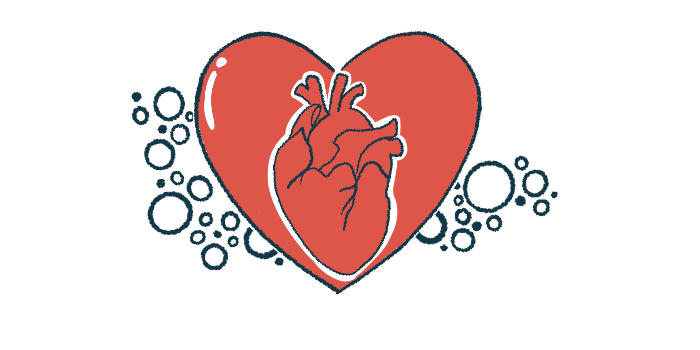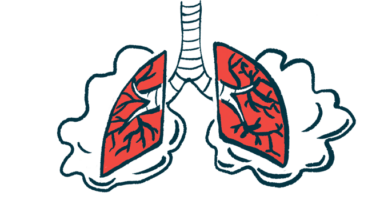Underdiagnosis of cardiac sarcoidosis leaves people at risk
Study finds low use of advanced imaging despite guideline recommendations

Only about one in four patients with unexplained, life-threatening arrhythmias are tested for cardiac sarcoidosis, even though medical guidelines call for it, according to a large worldwide study.
As a result, cardiac sarcoidosis remains largely underdiagnosed, a problem that “carries significant risks, including delayed treatment and the potential for adverse clinical outcomes such as heart failure or sudden cardiac death,” the researchers wrote. “Bridging this diagnostic gap with greater clinician awareness and guideline adherence is the key for timely and appropriate diagnostic testing for CS [cardiac sarcoidosis], particularly in younger patients with unexplained” heart arrhythmias.
The study, “Overlooked and Underdiagnosed Cardiac Sarcoidosis and Unexplained Ventricular Tachycardia and Fibrillation,” was published in the journal JACC Advances.
What cardiac sarcoidosis is and why it’s often missed
In sarcoidosis, an overactive immune response leads to the formation of granulomas — clusters of inflammatory cells that can develop in many organs. Over time, these granulomas may harden and cause lasting tissue damage.
When granulomas form in the heart, the condition is called cardiac sarcoidosis. This buildup can lead to arrhythmias, heart block, or even sudden heart-related death.
Despite its severity, cardiac sarcoidosis is often missed. Only about 5% of people develop clinical signs of the disease, yet heart lesions are found at autopsy in up to 60% of cases.
Previous studies suggest that cardiac sarcoidosis may underlie 17%-28% of unexplained cases of ventricular tachycardia (VT) or ventricular fibrillation (VF), two dangerous types of arrythmias.
Both conditions affect the ventricles — the heart’s lower chambers. In VT, the ventricles contract too fast, while in VF the heartbeat is uncoordinated, with the ventricles quivering instead of contracting effectively.
Diagnosing cardiac sarcoidosis is challenging because its symptoms can overlap with other heart conditions. While heart ultrasound often misses subtle disease, advanced imaging methods — such as heart MRI and PET scans — have improved early detection.
Why diagnosing cardiac sarcoidosis remains challenging
Myocardial biopsy — the gold standard for confirming cardiac sarcoidosis — involves collecting a small sample of the heart muscle for analysis. However, because granulomas often occur in a patchy pattern, the test has a sensitivity of about 20%. A test’s sensitivity refers to its ability to correctly identify those with a given disease.
Although the American Heart Association recommends evaluating for cardiac sarcoidosis in people with unexplained VT or VF, “a substantial disconnect is believed to persist between clinical recommendations and real-world practice,” the researchers wrote.
A team of researchers in the U.S. set out to determine how often people with unexplained VT or VF actually undergo guideline-recommended testing for cardiac sarcoidosis.
They conducted a retrospective analysis using the TriNetX Global Health Research Network, a health data platform that aggregates anonymized electronic health records from more than 90 healthcare organizations across the world.
The study included 732 adults with unexplained VT or VF who required the implantation of an implantable cardioverter-defibrillator (ICD) between 2020 and 2025. An ICD is a battery-powered device placed in the chest that is designed to monitor and correct arrhythmias.
The patients’ mean age was 53, and most were men (61%) and white (73%); 8% were African American. Patients were followed for a mean of 827 days, or just more than two years.
CS should be considered in all patients with unexplained VT/VF, and clinicians should use appropriate imaging techniques, such as MRI, PET, or biopsy, to enhance diagnostic accuracy.
Heart MRI was performed in 146 people (19.9%), chest CT scans in 54 (7.4%), and PET scans in 17 (2.3%). Myocardial biopsy was even rarer, with fewer than 10 people (1.4%) undergoing the procedure.
Overall, only about one in four people (26%) underwent any form of advanced heart imaging or a biopsy. As a result, sarcoidosis was confirmed in less than 1.4% of cases — far below the 17%-28% frequency suggested by previous studies.
“The lower-than-expected prevalence of sarcoidosis … may, in part, reflect the racial composition of our [study], as sarcoidosis is more common in African American populations and our study population was predominantly White,” the team wrote. “In addition, the low diagnostic yield seen in this [study] is likely not a reflection of true disease prevalence, but suggests possible gaps in the diagnostic process, based on the low rate of CS evaluations.”
Overall, these findings highlight how “CS should be considered in all patients with unexplained VT/VF, and clinicians should use appropriate imaging techniques, such as MRI, PET, or biopsy, to enhance diagnostic accuracy,” the team wrote. Future studies are required to “further identify underlying barriers to guideline adherence and to explore strategies for improving the diagnosis and management of CS.”







